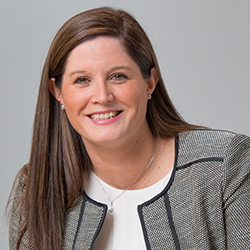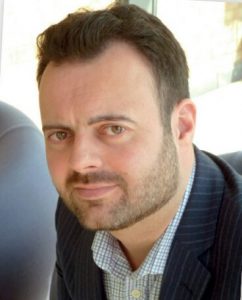Helen Watson is a Senior Strategist for Ogilvy Healthworld, and specialist in customer experience and learning. She will be joining us in chairing a segment on wellness & performance at our conference on October 16th, “Building the Business Case for Culture”. In preparation for our conference, we have asked Helen for a bit of insight into Ogilvy Healthworld, the usefulness of journey mapping, and the importance of wellness programs.
You have mentioned that customer journey-mapping has become a very important tool in your line of work. Can this work be translated into an employee journey-map, and if so, what insights can you share with companies to benefit their employees?
As a customer experience expert, I have many tools available to help me understand what customers are going through, and their needs, challenges, goals and barriers. These help me design services and communications tailored to meet their needs and the needs of the business. Often these tools are used purely for marketing or sales to a specific customer base. This doesn’t mean that companies can’t turn the tables and use the same tools and skills on their internal audience.
Creating empathy with your employees and seeing the world through their eyes enables you to create and build initiatives that are truly valuable and will actually deliver a return on investment.
The employee journey within an organisation starts before recruitment, and even up to and beyond an employee’s last days of employment with the organisation. It’s quite a long journey to map out in its entirety.
At Ogilvy Healthworld we take a goal-driven approach to our customer journeys as we do with our personas. This chunks up larger journeys and helps us focus on the ‘Moments of Truth’ where employees are engaging with the brand or services. Here we can identify what is happening and if there is an opportunity for the brand to improve that experience. It also helps the brand to understand if the processes and procedures that they have in place as an organisation are effective. Everything Ogilvy does is data driven not opinion based. This helps us ground our journeys in what is actually happening, rather than what a brand or business thinks.
An example of a goal could be a new employee’s first week at work. What is the actual experience they go through? You map the stages of that process out and work out what the employee is ‘Thinking, Feeling and Doing’ at those stages, and does that reflect the values of your brand.
For example, if on day one the new employee arrives keen and eager to start work, but their new laptop hasn’t arrived and no one in the team knows they are starting, then this could create a negative experience and impression of the brand for that employee. However, if this same employee had the experience of being provided with a working laptop and taken through an onboarding process, they are likely to be left with a much more positive impression of the brand.
For customer journey maps to be successful and create positive change, they have to be data-driven and reflect what is actually happening. If not, they are just the ‘program du jour’ and will be abandoned as quickly as they are created.
I have heard Ogilvy have relocated offices. We were wondering, in the new space, what has been implemented and dedicated to employee wellness?
Yes, Ogilvy Healthworld has relocated to The City/Shoreditch borders, a move away from our previous home on the South Bank in Sea Containers, but it is a move to be with our WPP Health & Wellness colleagues, GHG and Sudler & Hennessey.
Being in the hustle and bustle of the City is obviously a completely different environment compared to the relative calm of the South Bank and our new office environment is definitely a calming antidote to that.
The first thing that hits you is how natural the space is. The WPP Health & Wellness logo, along with our ethos, “Be Well, Do Well”, are mounted on a living moss wall in the reception area. It was this ethos and company culture that has shaped David Davenport-Firth’s (Managing Partner of Brain Sciences at Ogilvy Healthworld and engineer of the new office space) vision. In his words, ‘we should really practice what we preach to our clients.’
The theme of nature runs through everything within the shared space and nothing has been left to chance. Every decision from soft furnishing to the colour of the paint is evidence-based design and reflects the natural environment as many hours, weeks and months of research have gone into the thinking behind all the different elements.
David uses language such as ‘visual pace’ and ‘in harmony with all the different elements’ when talking about the space, and when you see it all in action you immediately understand what he has achieved. Just to give you some idea, he spent nine hours with the lighting company to programme the lights across the two floors, making sure it’s exactly right to create this ‘visual pace’.
From the purely functional and practical perspective, we have two clear zones: one for work and one for play. The home spaces for each agency are clearly workspaces with desks, monitors and break out meeting spaces etc. However, wherever you sit you can still see plants!
Then there is ‘The Den’. This is a large break out area where you can escape, eat your lunch, have a meeting, socialise, work, or whatever you want to do. Even the main reception area is designed to inspire creativity.
Beyond these areas, we have a meditation room, which may be considered to be one of the more unusual elements that was included, but again there is a science behind this and the space is in line with the behaviour we are trying to foster. You can’t help but be more relaxed in this room.
It doesn’t just finish with office space; there are a number of initiatives that are to start in the near future. Remember, we are only week three in the new space. There will be activities, following themes such as mental health, activity, sleep, nutrition etc., run in conjunction with experts in the field.
There’s loads more to come which I have not mentioned. David is truly passionate about this project and he definitely has some tricks up his sleeve. For me, it’s a very exciting time to be working at Ogilvy Healthworld and, being on the receiving end of these initiatives, I’m pretty excited to see what lies ahead!
What advice would you have for our delegates about creating and delivering a successful wellbeing initiative within their organisation? Do you have any experience you could share with them?
As a participant in this wellbeing initiative, I can speak to what works and what doesn’t work from an employee’s perspective. Wellbeing shouldn’t be a tick-box exercise. It’s all too easy to give your employees free coffee and fruit and tick that box as done. You won’t see any real results from this.
WPP Health and Wellness agencies are in a unique position. We are a group of progressive healthcare communications agencies and this gives us the opportunity to be more playful with the way we execute initiatives.
David’s advice is to work with what fits into your culture. The culture of your organisation is important, and your wellbeing should be in line with those values; it doesn’t have to be dry!
How we’ve translated and implemented the science behind health and wellness may not be in keeping with the values of other organisations. What’s important is interpreting the evidence in a way which is culturally appropriate for your organisation.
How will we know that this has been worth it? Well, we won’t know for a while. We have set a benchmark by running a survey at the beginning of week two; so we have a good idea of where we currently stand. We also know that some things will fail, but that is sort of the point; we need to know what does and what doesn’t work. The plan is to gain feedback from employees at regular intervals, look at the uptake of different activities, gain an understanding of what motivates people to get involved, and how we can improve in future.
Hear more from Helen and other specialists and experts speaking at our upcoming conference “Building the Business Case for Culture”.




